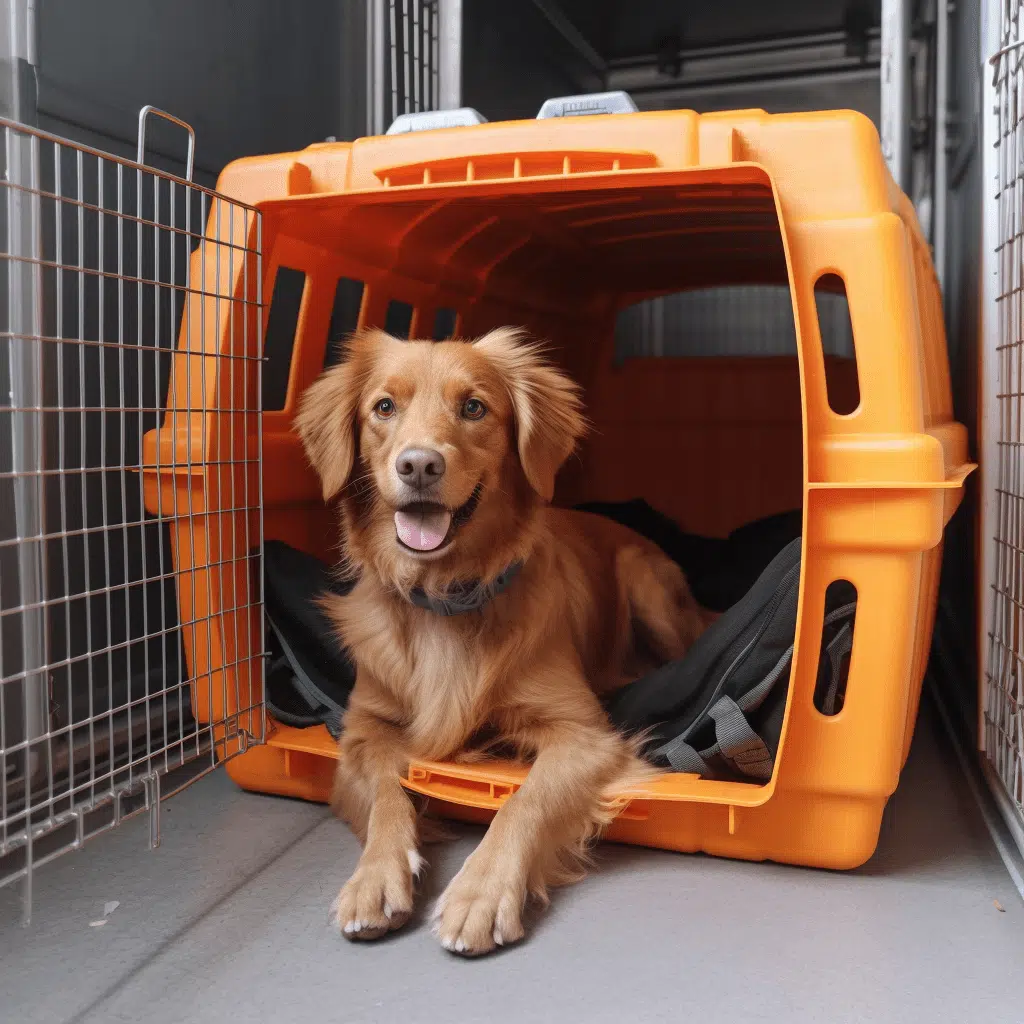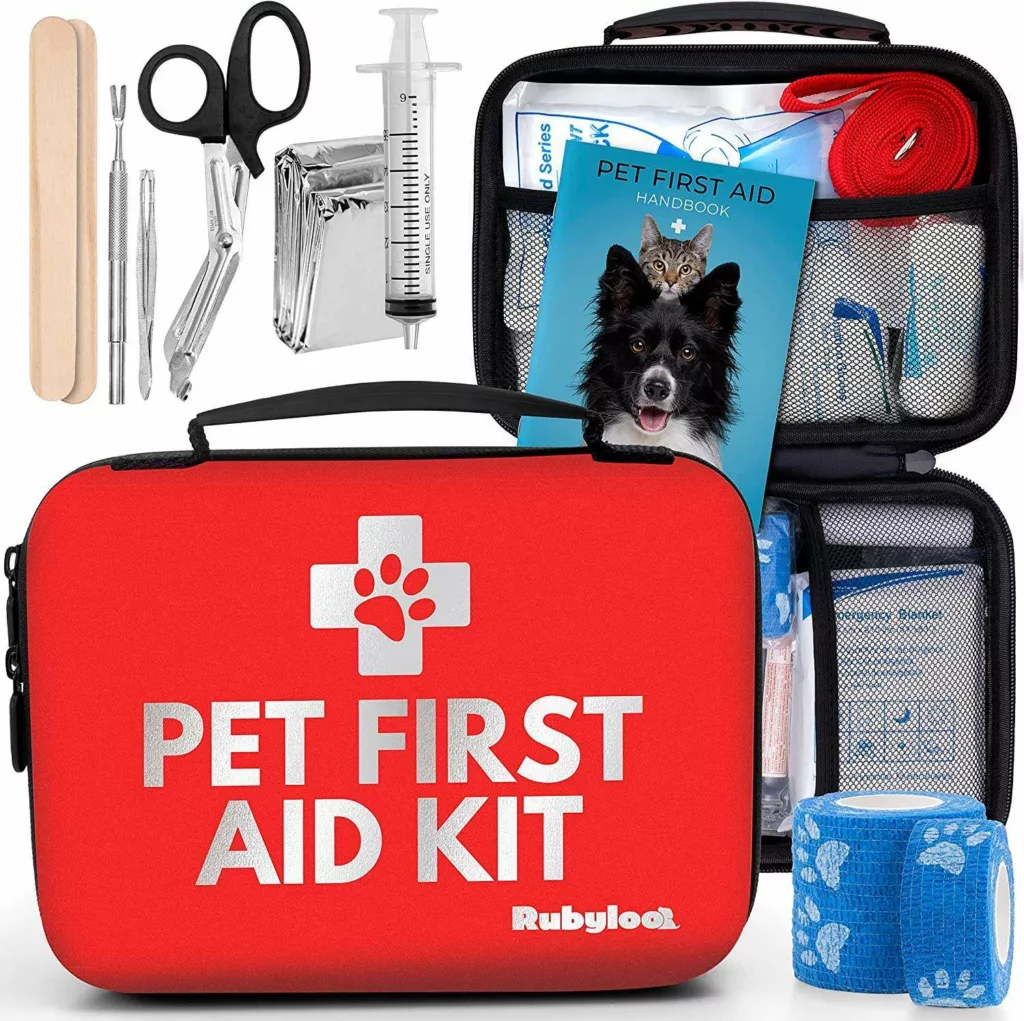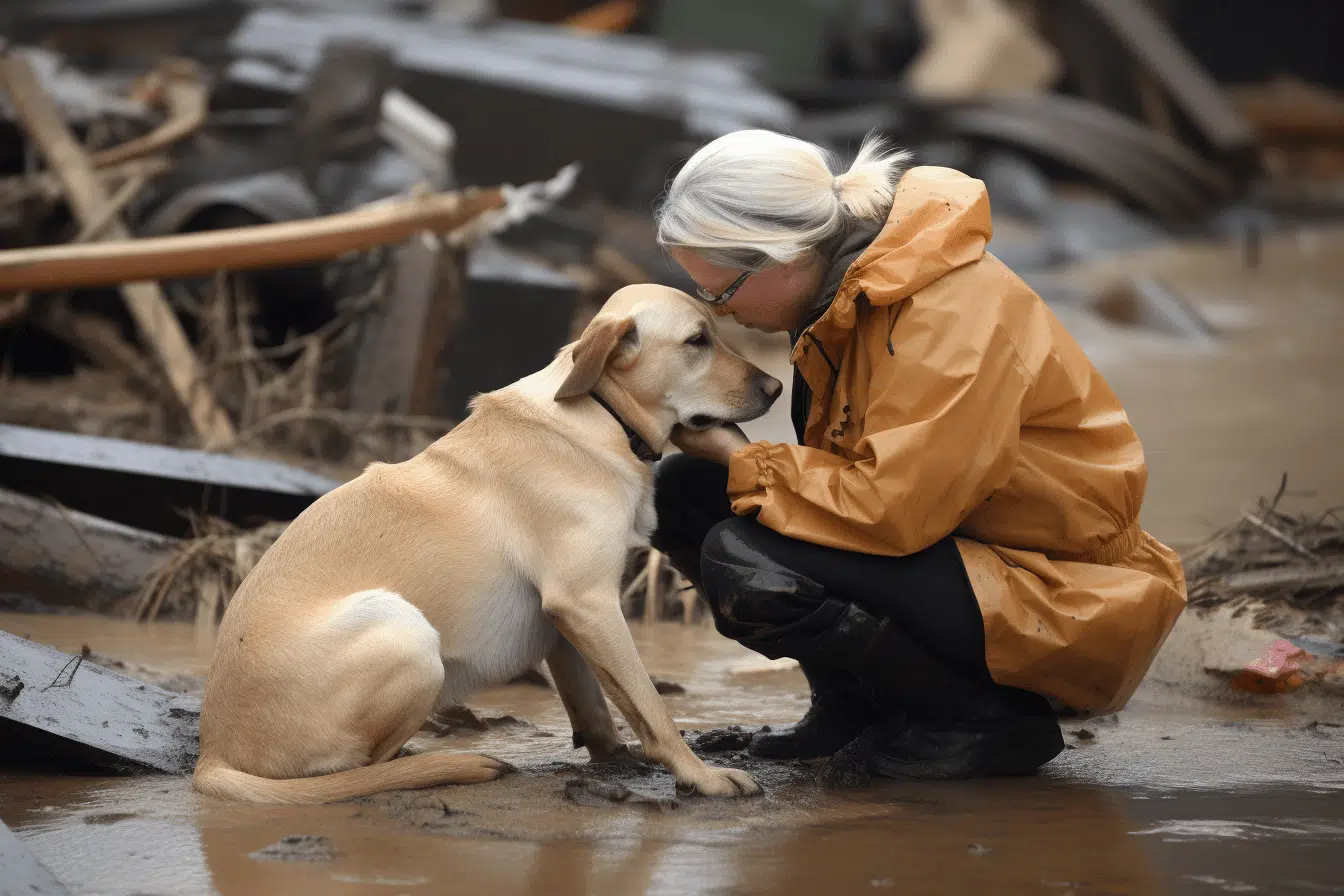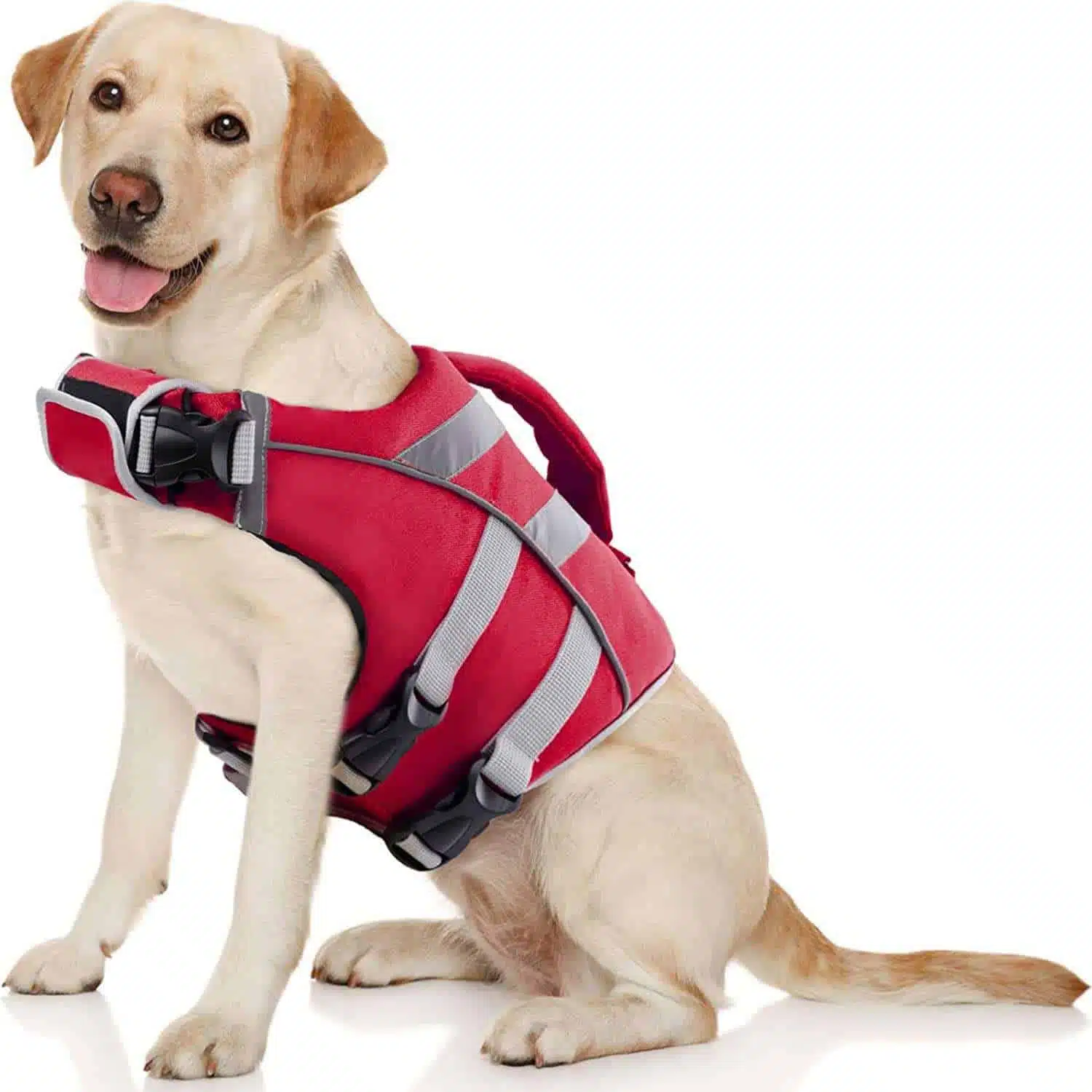Keep Your Pet Safe & Secure
Ultimate Guide to Creating an Emergency Preparedness Kit for Dogs

Living in an unpredictable world, we must confront the reality that emergencies and natural disasters can occur unexpectedly. When they do, the safety and well-being of our beloved pets become a paramount concern. As responsible dog owners, we have the duty to ensure our furry companions are well taken care of, even in the most challenging situations. One vital step we can take to safeguard our pets is assembling an Emergency Preparedness Kit for Dogs. This kit serves as a lifeline, helping us navigate crises with less anxiety and more confidence.
The kit starts with a pet carrier, which forms the cornerstone of your emergency plan. It should be sturdy, comfortable, and spacious enough for your dog to move around. Equally important, it should be easy for you to transport, especially in situations that might require swift evacuation. You'll also need to include food and water supplies. These are the basic necessities for your dog's survival, and preparing a sufficient supply in advance ensures your pet has the sustenance they need, no matter the situation.

1. Choose the Right Pet Carrier
A pet carrier is an essential component of an emergency preparedness kit for dogs. Select a sturdy, comfortable carrier that offers ample space for your dog to stand, turn around, and lie down. The carrier should have proper ventilation, secure fastenings, and be easy to carry.
In addition to providing a safe space for your pet during a crisis, a carrier also serves as a means of transportation in case of evacuation. When choosing a carrier, consider your dog's size, weight, and temperament. Familiarize your dog with the carrier in advance by placing a blanket or toy inside, allowing them to associate it with comfort and security.

2. Low Profile Dog Bed
Including a low-profile dog bed in the carrier is a great idea, as it can provide extra comfort for your pet during an emergency situation. When selecting a dog bed, ensure it is lightweight, easily foldable or rollable, and fits comfortably within the carrier without compromising the space needed for your dog to move around. It's important to choose a bed made from durable, washable materials that can withstand potential challenges during emergencies.
3. Stock Up on Food and Water
A critical aspect of emergency preparedness is ensuring your dog has a sufficient supply of food and water. Pack at least a three-day supply of non-perishable dog food in airtight containers. Dry kibble or vacuum-sealed wet food are suitable options. Also, include water specifically for your pet, as dehydration can be dangerous in stressful situations.
A general guideline is to pack one gallon of water per day for a medium-sized dog, adjusting the amount based on your dog's size and needs. Don't forget to pack collapsible or travel-friendly pet bowls to make feeding and hydration more convenient during an emergency.
4. Keep Medications and Medical Records Handy
In an emergency, having quick access to your dog's medications and medical records is crucial. Store a copy of your pet's vaccination records, medical history, and any necessary medications in a waterproof container. This information will be invaluable to emergency responders or veterinary professionals providing care to your dog during a crisis. Additionally, include a list of any allergies or specific medical needs your dog may have.
If your pet requires prescription medication, ensure you have at least a two-week supply on hand. Rotate medications in the kit periodically to ensure they remain effective and do not expire.

5. Assemble a Pet-Specific First Aid Kit
A pet-specific first aid kit is a crucial component of your dog's emergency preparedness kit. You can purchase a pre-made kit or create your own by gathering essential supplies. Include items such as gauze, adhesive tape, tweezers, a digital thermometer, antiseptic wipes, and a pet-friendly antiseptic spray. In addition, consider adding a pet emergency handbook, a muzzle (if appropriate), and an emergency blanket to help regulate your dog's body temperature.
Familiarize yourself with basic pet first aid procedures, such as treating minor wounds, recognizing signs of distress, and performing CPR on your dog, to be better prepared in case of an emergency.
6. Include a Leash and Harness
Proper identification is vital during emergencies, as it increases the likelihood of reuniting with your pet if you become separated. Ensure your dog has a collar with up-to-date identification tags, including your name, phone number, and address. In addition to tags, consider microchipping your dog, as it provides a permanent form of identification that cannot be easily removed or lost.
Keep a copy of your pet's microchip information and registration in the emergency kit, along with a recent photo of your pet to aid in identification. Regularly update your contact information with the microchip company to ensure it remains current.
7. Pack Familiar Items for Comfort
In emergency situations, familiar items can provide much-needed comfort and help reduce stress for your dog. Include a few of your pet's favorite toys, a blanket, or bedding that carries the scent of home. These familiar items can help your dog feel more at ease in an unfamiliar environment, reducing anxiety and promoting a sense of security.
When selecting comfort items, opt for durable, easily washable materials that can withstand potential challenges during emergencies. Remember to balance the number of comfort items with the space available in your pet carrier, ensuring your dog still has room to move around comfortably.

8. Sanitation Supplies are a Must
Maintaining proper hygiene is important for your dog's health and well-being during an emergency. Include sanitation supplies in your emergency preparedness kit, such as waste bags, pet-friendly disinfectant, and disposable gloves for cleaning up after your dog.
These items will help you manage your pet's waste, maintain cleanliness, and minimize the spread of bacteria or disease. In addition, consider packing absorbent pet pads, which can be used as a temporary solution for dogs that are unable to go outside. If space permits, include a small, portable pooper scooper to make waste disposal more convenient and hygienic.
9. Don't Forget Grooming Supplies
Grooming supplies are an essential part of your dog's emergency preparedness kit, as they help maintain your pet's overall health and well-being. Include a brush, comb, or grooming tool appropriate for your dog's coat type, as well as pet-safe shampoo and a towel for drying. Regular grooming helps prevent matting and keeps your dog's coat in good condition. In emergency situations, keeping your dog clean and free of debris can help prevent skin irritations, infections, and other health issues. Also, consider including a pair of nail clippers or a nail file, as long nails can cause discomfort and injury.
10. Create an Emergency Contact List
In times of crisis, having an emergency contact list readily available can save valuable time and provide peace of mind. Compile a list that includes your veterinarian's contact information, local animal shelters, pet-friendly hotels or accommodations, and emergency animal clinics. Include the contact information of friends or relatives who can assist with pet care if needed.
Store this list in a waterproof container or bag and place it in your dog's emergency preparedness kit. It's also a good idea to have a digital copy of your contact list stored on your phone or in an easily accessible online location.

11. Consider a Pet Life Jacket
If you live in a flood-prone area or may need to evacuate by boat, a pet life jacket is essential for your dog's safety. These life jackets are designed to provide buoyancy and support, helping your dog stay afloat in the water. When choosing a life jacket, look for one with a sturdy handle on the back, which allows you to lift your dog out of the water if needed.
Ensure the life jacket fits your dog snugly but comfortably, without restricting their movement or breathing. Familiarize your dog with the life jacket before an emergency situation, so they feel comfortable wearing it when needed.
12. Include a Flashlight and Extra Batteries
A flashlight and extra batteries are essential items in your dog's emergency preparedness kit, providing illumination during power outages or low visibility situations. A reliable flashlight will help you navigate unfamiliar environments, find your dog in dark conditions, and signal for help if necessary. Consider including a headlamp, which allows for hands-free operation, making it easier to manage your dog and other tasks simultaneously.
Choose high-quality, long-lasting batteries for your flashlight and other battery-operated devices in the kit. Remember to check and replace batteries periodically to ensure they remain functional when needed.
13. Pack a Blanket or Towel
An extra blanket or towel is a versatile addition to your dog's emergency preparedness kit, serving multiple purposes during a crisis. A blanket can be used for warmth, comfort, or to help dry your pet after exposure to water or damp conditions. Towels can also be used for cleaning purposes or as makeshift bedding if your dog's bed becomes damaged or unusable.
When selecting a blanket or towel, opt for lightweight, easily foldable, and quick-drying materials. Ensure the size is appropriate for your dog's needs and can be easily stored within the emergency kit without taking up too much space.
14. Update Your Dog's Identification
Ensure your dog has a collar with up-to-date identification tags. Keep a copy of your pet's microchip information and registration in the kit.
15. Waterproof Storage Container
Finally, pack everything into a waterproof storage container to make sure it's ready to go in case of an emergency.
The Emergency Preparedness Kit for Dogs is an essential tool that can make a significant difference during unexpected situations. Along with a suitable carrier, food and water, the kit should also contain medical records and medications, a pet-specific first aid kit, and proper identification tools for your dog. These items can be lifesaving in a crisis, ensuring your pet receives the necessary care and increasing the chances of reunion if you become separated.
Comfort items, sanitation supplies, and grooming supplies are also vital components of the kit. They provide a sense of familiarity, maintain hygiene, and ensure your dog's comfort during stressful situations. An emergency contact list, a pet life jacket (for flood-prone areas), a flashlight with extra batteries, and an extra blanket or towel round off a comprehensive emergency preparedness kit.
In summary, preparing for emergencies is an integral part of responsible pet ownership. Regularly checking and updating your emergency kit ensures you're ready to face any situation, providing the best care for your beloved canine friend when they need it most. Remember, your dog relies on you for their safety and well-being, so take the time to assemble a thorough emergency preparedness kit.
Disclaimer:
Please note that the products we have recommended in this blog post are linked through an affiliate program. This means that we may earn a small commission if you choose to purchase any of these items using the links provided. This comes at no additional cost to you, but the income we earn through these affiliate links helps support our work, allowing us to continue providing valuable information and resources.

One Comment on “Emergency Preparedness Kit for Dogs: Your Essential Guide”
Pingback: Celebrate National Pet Travel Safety Day With These Essential Safety Tips | OC Shelter Pets